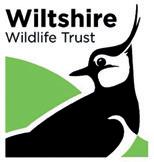




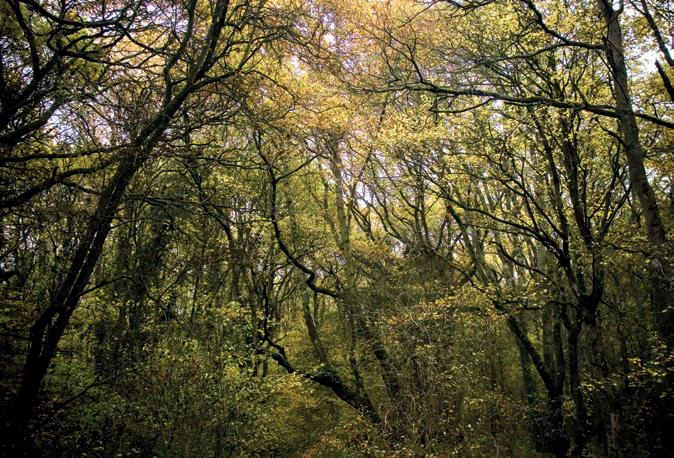







Who can resist a Little Owl, with their expression of barely suppressed outrage? Huge congratulations to all the finalists of our Wiltshire Wildlife Photography Prize!
Many of you have expressed your outrage in recent months in letters to your MPs about the Planning and Infrastructure Bill, which threatened to remove hard-won protections for nature. Following unhelpful rhetoric from the Chancellor about ‘bats and newts’ as ‘blockers’ to development, The Wildlife Trusts swiftly published evidence that bats and great crested newts were a factor in just 3% of planning appeal decisions in 2024. Solutions already exist to achieve a win-win for nature and development, as the success of our ‘Newt Superhighway’ (p6) demonstrates. The Government finally listened and agreed vital amendments to the Bill, in no small part due to the incredible response of Wildlife Trust and RSPB members. Together, we really can make our voice heard for nature. As we go to press, the fight continues in the House of Lords for stronger legal protections for our globally important chalkstreams.
Our wonderful volunteers are front and centre of this edition. Wiltshire is fortunate to have many expert County Recorders and wildlife groups who work closely with the Trust,


volunteering their time and expertise. Wiltshire Mammal Group and Wiltshire Ornithological Society joined us to host a Bioblitz at Langford Lakes this summer (p18) and encourage more budding citizen scientists. Simon Tucker of West Wilts Ringing Group shares insights into the fortunes of Barn Owls on p8. In Swindon, our Forest Meadows volunteers have given an incredible 2500 hours to conservation tasks this year (p12). Our work to connect people with nature relies on volunteers too, from our Swindon Wellbeing Programme (p13) to our Wildlife Watch groups for families, which now number nine across the county. Salisbury Wildlife Watch group marks its 10 year anniversary in 2025, and we celebrate the group’s three volunteer leaders –Penny, Penny and Sarah – on p14.
To all of you who volunteer your precious time, and to all of you who support us through your membership and donations to our appeals, a heartfelt thank you. I wish you many a happy fungi foray and mindful moment in nature this autumn and winter season.
Wiltshire Wildlife Magazine
Editors
Rebecca Clay
Emma Garry
Becki Mckinlay
Design
Inkcap Design
Printed on paper produced from responsibly managed forests. Recycled paper.
Printed in Wiltshire by Mail and Print mailandprint.co.uk
Front Cover photo
A Pair of Little Owls by Phillip Male
Wiltshire Wildlife Trust
Patron
Robert Floyd
Chair
Phil Heads
Council Members
Julian Barlow
Julian Crawford
Charles Fattorini
Richard Gantlett
Tim Gilson
Fiona Goff
Melanie Henry
Dagmar Junghanns
Piers Maynard
Jo Lewis CEO Wiltshire Wildlife Trust

Sylvia Wyatt
Chief Executive
Joanna Lewis
Registered Office Elm Tree Court, Long Street, Devizes, Wiltshire SN10 1NJ
Tel: 01380 725670
wiltshirewildlifetrust.org
Registered Charity Number 266202 Company Registration Number 730536
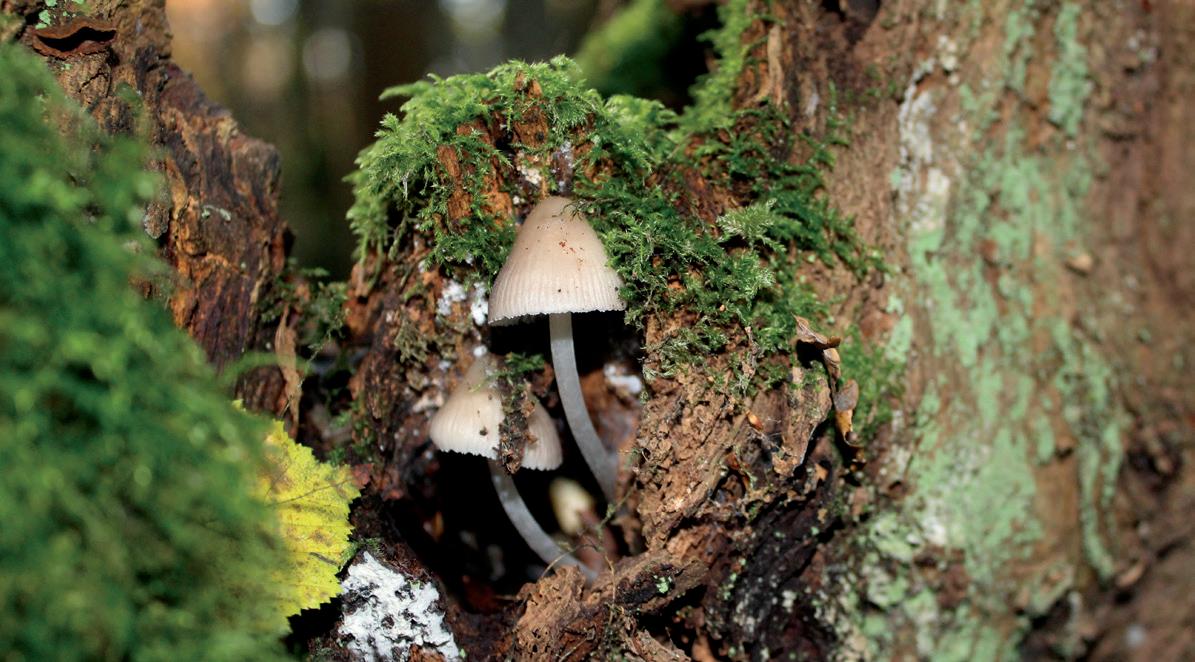
There is a magic to a Wiltshire woodland in autumn. At our feet, a secret kingdom is awakening. Spurred on by the autumn rains and cooler temperatures, the forest floor transforms with the weird and wonderful forms of mushrooms and toadstools, and carpets of moss creep up the sides of trees. These striking organisms are the rulers of the woodland ecosystem.
alluring. You might spot the iconic fairytale toadstool, the scarlet-capped fly agaric, pushing through the leaf litter, or the ghostly white, tiered shelves of turkeytail sprouting from a fallen log. Look for the delicate, violet hue of the amethyst deceiver or the fascinating shaggy inkcap, which dissolves into a black, gooey mess as it ages.
What we see and call a mushroom or toadstool is merely the ‘fruit’ of the fungus. The main part of the organism, a vast, threadlike network called the mycelium, lives hidden in the soil or decaying wood. This network acts as nature’s great recycler, breaking down dead leaves and fallen branches, unlocking vital nutrients like nitrogen, phosphorus, and potassium that are vital for plant growth. Without fungi, our woodlands would be buried under an ever-deepening pile of dead debris.

After a spot of damp weather, woodlands become dotted with fungi of every imaginable shape, colour, and size. Fungi are making a comeback, made trendy in patterns on wallpaper and fabrics. Their charismatic names and strange colourful forms are
350 million years ago in the Carboniferous period (when the first true trees appeared), nothing could digest lignin - a key component of the cell walls of vascular plants, particularly in wood and bark. About 90% of the coal on earth comes from this time when fungi had not yet evolved to digest deadwood and plant matter; as soon as this adaptation took place, they ate their way through anything not already buried in swamps.
Our woodland reserves will reward a slow and observant walk this season. For a truly spectacular display of fungi and mosses, head to our ancient woodlands. Clouts Wood, near Wroughton, is a fantastic spot to explore, with a rich mix of broadleaf trees and damp conditions created by the valley.
The ancient woodland at Ravensroost, near Malmesbury, also provides a perfect habitat for a wide variety of species. In the south of the county at Blackmoor Copse, you can find species like the giant hen of the woods, and on nearly every old stump you’ll find the ashy, antler-like fruits of candlesnuff fungus.
When you visit, walk slowly and scan the ground, the base of trees, and especially any decaying logs. However, admire with caution. While they are beautiful to look at and photograph, many fungi are poisonous: please appreciate them but leave them untouched.

But their role is even more profound. Many fungi form symbiotic relationships with tree roots, creating what has been coined the ‘Wood Wide Web’. This dates back even further to the Devonian period 400 million years ago, where the very first plants relied entirely on close relationships with fungi for nutrients, since they had no leaves or even roots. These mycorrhizal networks connect entire forests, allowing trees to share nutrients, water, and they even send warning signals about pests or disease. A walk in the woods is a walk over a bustling, intelligent, underground network of information and communication.
Sharing the forest floor, and not to be outdone, are the ancient and resilient mosses. Once upon a time in the Carboniferous coal forests, most of the plants you’d see would be mosses – though they wouldn’t necessarily look it to our modern eyes. For instance, lepidodendrales looked like huge, scaly trees that might have grown 40 metres tall! Surviving mosses may seem less impressive
at first glance, but act almost like miniature forests in their own right.
In the damp air of autumn, they become particularly vibrant, transforming fallen branches and tree trunks with their stunning emerald hues. Take a moment to look closely. You’ll see a world of intricate structures, from the tiny, star-like leaves of common haircap to the feathery fronds of neat feather moss. Mosses are ecological powerhouses. They act like natural sponges, absorbing and holding vast quantities of rainwater, which helps to keep the woodland floor moist and prevents soil from eroding, as well as making soil of their own. The colourful, sodden sphagnum mosses of our bogs and mires can hold eight times their weight in water and have special chemicals in their cells that prevent decay. Over hundreds of years, these layers of moss build up and are compressed into carbon-storing peat. They are also vital microhabitats, providing shelter and moisture for countless tiny invertebrates that form the base of the woodland food chain.
Every mushroom and carpet of moss you see is a sign of a healthy, living woodland – help us keep it that way.
Your donations support our conservation work that allows this hidden world to flourish. Please give what you can and help us protect Wiltshire’s woodlands for wildlife and for people.
Donate now at wiltshirewildlife.org/appeals/naturerecovery
Did you know?
Some mushrooms, such as sulhpur tuft and JackO’Lantern are bioluminescent meaning they can glow in the dark.
Above: Ravensroost Wood Nature Reserve
Below: Fruiting body of moss



Becky Gee
Project Manager – Landscape Recovery
Individual great crested newts can be identified by looking at their bellies as the pattern of black spots they each sport is as unique as a fingerprint.
In the fading light of late summer and early autumn, a crucial mission is underway: creating wetlands for one of Wiltshire’s most enchanting and protected residents, the great crested newt.
With its jagged crest and a belly of vivid orange, this miniature dragon of the pond is a spectacular but unfortunately rare sight. Through increased development, the ponds and wild corridors these amphibians need to thrive are under constant threat. But thanks to an innovative scheme and funding from Natural England, we are creating a network of watery highways, ensuring our great crested newts have a thriving future in Wiltshire.
Since 2020, Wiltshire Wildlife Trust has been a key partner in Natural England’s District Level Licensing scheme. This approach balances the need for new homes and infrastructure with the needs of our wildlife. In essence, developers invest in a large-scale, professionally managed habitat creation programme, which the Trust then delivers
on the ground. This allows us to create and restore ponds in the best possible locations, creating a resilient, connected landscape that is far more effective than isolated, small-scale efforts.
The work is carefully timed. We schedule our pond restoration and creation for late summer and autumn, a period when the ground is typically dry enough for machinery, but crucially after the breeding season for birds and amphibians has concluded, minimising disturbance to the local ecosystem.
Since joining the scheme, we have created or restored a remarkable 62 ponds across the county. This year, we are adding another 10, including a brand-new site at our Green Lane Wood nature reserve. But how do we know if the newts are moving in?
The answer lies in a fascinating scientific tool: environmental DNA (eDNA). Every animal leaves a microscopic genetic footprint in its environment, from skin cells to other
This pond in Tisbury is just one of 62 we have restored across Wiltshire
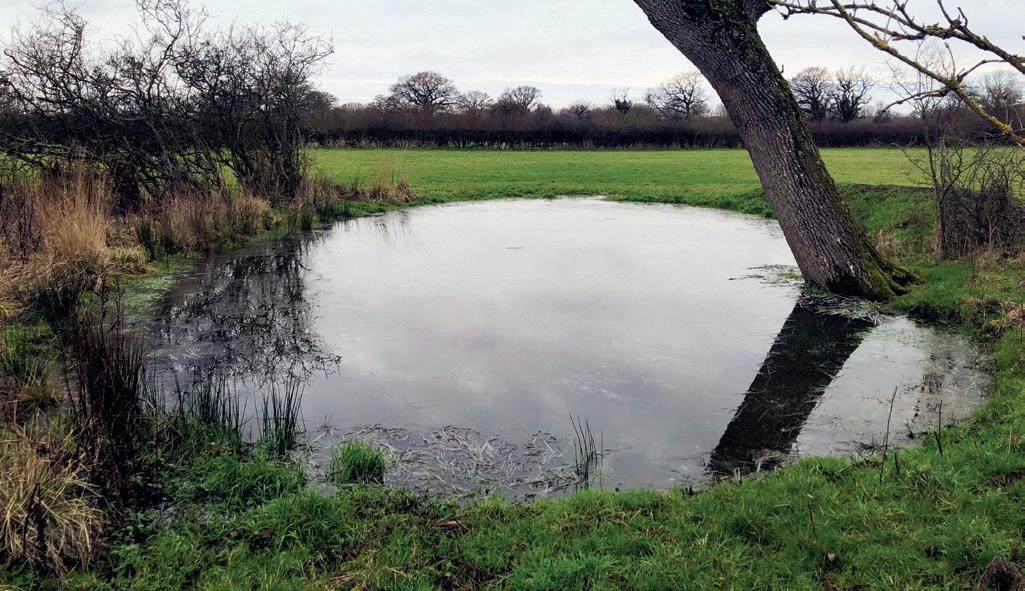
secretions. By simply collecting a water sample from a pond, we can send it to a lab to be analysed for the unique genetic signature of the great crested newt. It is wildlife detective work at a molecular level, allowing us to confirm their presence without ever needing to see or disturb them.
These samples are collected between midApril and the end of June, when the newts are in the ponds for their breeding season. We monitor each new pond for the first four years, and then periodically over the scheme’s 25-year lifespan, to guarantee their long-term value for wildlife.
Last year, the results from our eDNA sampling demonstrated the resounding success of our approach. Of the 44 ponds we sampled, an incredible 23 came back positive for great crested newt DNA. This success rate shows that by creating high-quality habitats in strategic locations, we can give this protected species the foothold it needs to expand and thrive.
This year, our team has been busier than ever, sampling a record 57 ponds across Wiltshire. As we go to print, we are eagerly awaiting the results, which we expect to receive this autumn; you can keep an eye on our blog (wiltshirewildlife.org/blog) for the updated results. We are also trialling a new, innovative filtration method of sampling alongside the standard technique, helping us to continually refine our methods for the future.
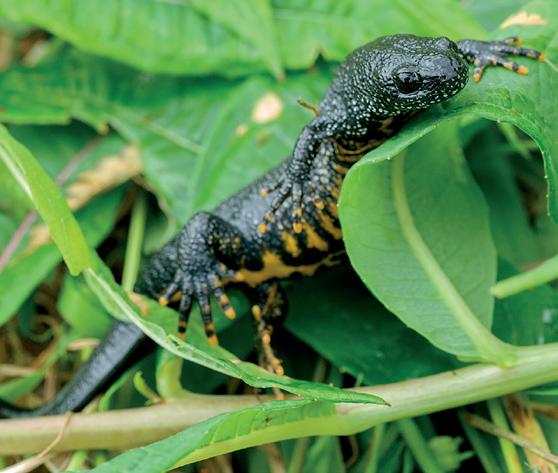
Each new or restored pond is a home not just for newts, but for dragonflies, water beetles, wading birds, and countless other species. Your generosity helps to create and restore precious habitats across the county. To contribute to projects like this, please consider donating to our Nature Recovery Fund by visiting wiltshirewildlife.org/appeals/ nature-recovery-fund
If you have some time to spare and want to get hands-on with conservation, why not join our dedicated volunteers? Find out more about opportunities with our Water Team, including becoming a Water Guardian at wiltshirewildlife.org/volunteering
We’re on the hunt for our next home for great crested newts. If you have a pond that is over 150m2 and in need of restoration works please get in touch at water@wiltshirewildlife.org

Simon Tucker Group Secretary, West Wilts Ringing Group

SPECIES FOCUS: BARN OWLS
Simon Tucker, long-term volunteer for the Trust, examines what it takes for barn owls to thrive in our region
Photo: Darin Smith
The barn owl is one of our most iconic birds of prey. Perhaps the most well-known of our owls, the white figure ghosting across fields has become a recognisable feature in our countryside. They are both nocturnal and crepuscular (twilight) hunters, but when food is scarce or their young are particularly demanding, they can be found hunting in daylight.
The barn owl is a schedule 1 protected bird, meaning a special licence from Natural England is needed to monitor them on the nest and to ring them and their offspring. Once upon a time, like many of our birds of prey, their population was threatened by a barrage of difficult circumstances: from deliberate persecution to secondary poisoning from agricultural pesticides in the 1950s to 70s.
Although the threats have decreased significantly in recent years, they, like other birds of prey who feed on rodents, are still being threatened by the injudicious use of rodenticides meant for internal use but being used outside.
Barn owls’ left ears are higher than their right ears. This helps them to locate sounds more accurately.
The first official record of the species was in medieval times, but it had no doubt been present long before. There are now approximately 4,000 breeding pairs in the UK. In Wiltshire, the British Trust for Ornithology’s Bird Atlas 2007 – 2011 (the last comprehensive record of barn owl data) recorded the presence of barn owls in 35% of the 2km2 tetrads used to survey Wiltshire. This means that, during the survey
period (2007-2011), the presence of breeding pairs was recorded in over a third of 2km x 2km squares used to survey the county. This could have been actual sightings, or evidence of their presence, such as pellets or whitewash. There is huge enthusiasm across the board for supporting barn owls in Wiltshire, from farming communities, the Ministry of Defence and, of course, Wiltshire Wildlife Trust. This is shown by the sheer number of nest boxes provided for barn owls across the county - approximately 1,000! A huge proportion of those are on Salisbury Plain and the surrounding areas.
Key to barn owls’ success, survival

What’s for dinner? A barn owl diet
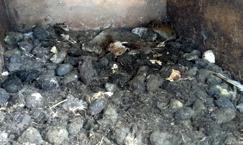
l Field voles 40%
l Common shrews 20%
l Wood mice 15%
l Other (inc. house mice, bank voles, pygmy shrews) 25%

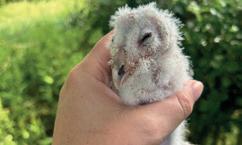

and breeding is the availability of prey, primarily voles and mice. According to the Barn Owl Trust, field voles make up 45% of their diet, followed by common shrews (20%) and wood mice (15%); with house mice, bank voles and pygmy shrews making up the balance. Unusually, they may also eat birds and amphibians. In one box on Salisbury Plain last season, we discovered what was clearly the remains of a starling, with similar remains also found in a box near Upper Waterhay.
Breeding this year has been badly affected by the spring weather, with
“Breeding this year has been badly affected by the spring weather.”
cold and dry, then very hot and dry conditions resulting in very little grass growth. This hugely impacted silage and haylage growth, making it a difficult early breeding season for small mammals and, as a result, barn owls.
Whilst things are still challenging in south Wiltshire, the north has seen improvements, with 30% of my barn owl boxes checked so far indicating successful breeding: ranging from eggs to chicks a few weeks off fledging.
The first few weeks of life bring rapid growth for young barn owls, before they are ready to fledge the nest and exhibit the fabulous plumage that has become so recognisable. We hope this year’s fledglings will thrive and these beautiful figures remain a permanent feature of our county’s landscapes.
10 weeks
The time until a barn owl is ready to fly
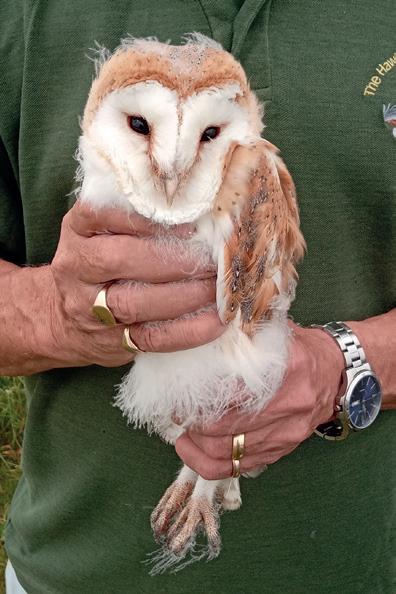
From an incredible cohort of entries, our winners for this year’s photography prize have been chosen
This year, we asked you to ‘Capture the Wild’, taking photos to showcase Wiltshire’s natural beauty, from breathtaking vistas to incredible wildlife. The entries flooded in, with stunning photos revealing your unique views of Wiltshire and its wildlife.
After careful deliberation, our expert panel of judges narrowed the selection down to our worthy winners and brilliant highly commended photographers. Huge congratulations to them, and well done to everyone who took part!
Take a closer look at the winning photos on our website: wiltshirewildlife.org/photo-prize-winners
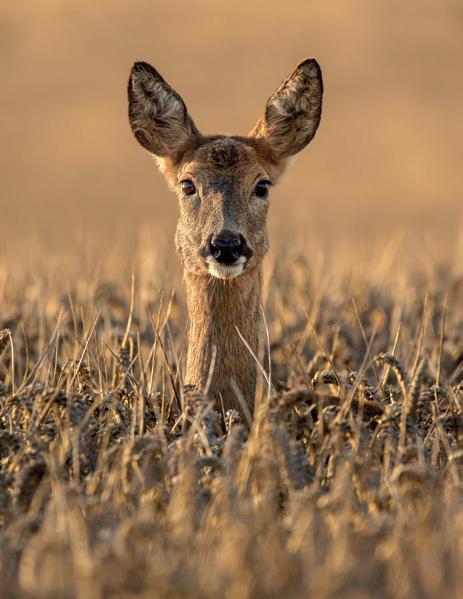
What the judges said: Wow! What can I say, the composition of this roe deer is absolutely perfect. Front and centre of the image, with a soft focus in the fore and background to really channel your attention to the roe deer’s alert – and completely in focus – head looking out over the field.
What the judges said: This is a superb close up of a crow. The image definition is so sharp, with even the reflection in the crow’s eye visible. I love the blueish sheen of the crow’s wings wonderfully highlighted by using a shallow depth of field to create a soft, out-of-focus green backdrop.
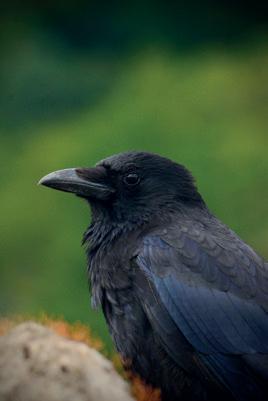

What the judges said: I could get lost in this photo of trees and their reflection, it’s so calming.

A big thank you to Wild View Cameras, who generously sponsored this year’s prizes. Established in 2011 by Mike and Michele Booth in Melksham, they have grown to be one of the UK’s leading providers of wildlife watching equipment. Wild View Cameras have helped thousands of people choose the right equipment for their needs and pride themselves on the best customer service available, while also supplying local and national environmental organisations, along with schools and universities.
Visit wildviewcameras.co.uk to see their full range.
We were delighted to have an amazing panel of judges using their expertise to select the winning images this year.

Upton Wildlife Photographer and Filmmaker
Nick Upton is an award-winning wildlife photographer, filmmaker and biologist. After 25 years in wildlife television production, Nick’s focus is now on using photography to tell powerful conservation stories and capture intriguing wildlife behaviours.

Aby Davies Senior Marketing and Communiations Officer, National Trust
Aby Davies is Senior Marketing and Communications Officer at the National Trust’s Lacock Abbey. Having loved photography since school, Aby now enjoys being surrounded by the photographic history of Lacock – where the negative was invented in 1835 –and witnessing the everyday creativity of visitors capturing the site’s beauty.

Butterfly and Bee at Lower Moor Farm
by Rob Willis
What the judges said: This is a truly fantastic image, capturing both the butterfly and bee in so much detail, right down to the butterfly’s proboscis and flecks of pollen on its face and body. We’re all wondering what they’re discussing aren’t we? One pollinator snacking is always nice to observe and two sharing the same flower looks really sweet - is there a more serious truth to why they need to do so?
What the judges said: I really liked this very engaging image of a deer family peering timidly towards camera from a field margin. It’s a lovely wildlife moment captured with great skill and no doubt huge patience, with all the deer in good focus, framed by the vegetation around them and the sky above.

Joanna Richards Head of Communications and Marketing,
The Wildlife Trusts
Joanna Richards is Head of Communications and Marketing for The Wildlife Trusts, helping to shape the voice of the movement across the UK. With years of experience leading national campaigns and brand communications, Joanna knows what makes an image compelling, memorable, and effective in championing our natural world.

What the judges said: This is a really lovely shot of two little owls perched on a post in tall grassland in nice warm light. The perfect focus on their piercing eyes really holds your attention and they’re nicely framed by the soft focus grasses around them. Patience to wait for this moment has been combined with good technical skill and an aesthetic sense to capture this strong image.
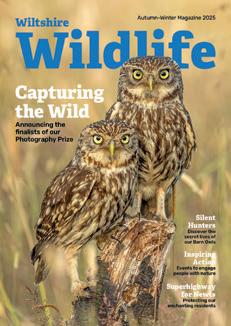
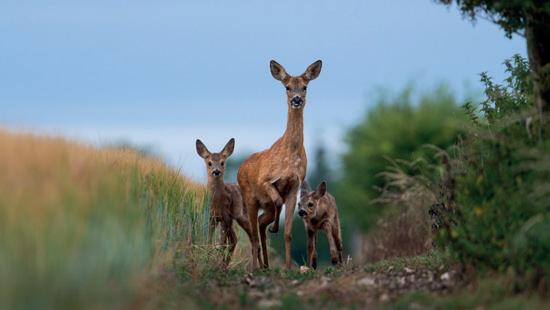
Wiltshire Wildlife Trust is deeply rooted in Swindon. Our work across the town and surrounding areas is a prime example of a location where we are delivering our two core strategic objectives: creating a connection between people and nature, and delivering the recovery of local habitats.
The Trust is working to create a more biodiverse and nature-friendly environment within and around the town. Our work spans from nurturing individual well-being to enhancing vital green spaces, all powered by dedicated volunteers, communities and strategic partnerships, and serving to create a greener and more interconnected town.
Our partnership with Swindon Borough Council, with funding from the Trees for Climate programme, is central to our ambition of increasing the number of trees and woodland access across Swindon. We are actively re-establishing a network of Tree Wardens across every parish, inviting individuals with a passion for trees to protect existing greenery and help expand our local canopy.
Westcott Community Forest Garden and Tree Nursery is a key project where volunteers have been involved at ground level. We have welcomed anyone with an hour
or so to spare each week to help with general horticulture duties like watering, weeding, and potting, as well as collecting seeds, nuts, cones, and berries. As a result, we’ve seen a diverse range of volunteers getting stuck in, who have also assisted with promotional events and helped maintain records for the site, creating a brilliant community-led feel to the project.
Our commitment to enhancing Swindon’s biodiversity is evident in our work across various nature reserves, not just the ones owned by the Trust, but also those where we work in partnership with other organisations. Spring brought opportunities to record newly emerging species; with officers and members of St Andrews Parish Council plus other volunteers, we surveyed a series of ponds, finding a large population of great crested newts. This helps us plan further enhancement works and long-term management for pond sites across the town and surrounding area.
At Churchward Allotments, five slow worms were observed, and a mining bee was seen collecting pollen at Raybrook Meadow. Even with challenging weather, Mouldon Hill has burst into colour with plants like pyramidal
“Our commitment to enhancing Swindon’s biodiversity is evident in our work across various nature reserves.”
1. St Julian’s Community Woodland
2. Rivermead and Swindon Lagoons
3. Rushy Platt – home to 82 species of bird
4. Hagbourne Copse – with spectular annual bluebell displays
5. Clouts Wood - home to some of our Wellbeing sessions
orchid, meadow vetchling, yellow rattle and wild carrot. Volunteers here have been cutting back paths and sections of scallops to maintain a range of cutting heights throughout the year, crucial for increasing biodiversity.
Our volunteers are the backbone of our efforts and the Swindon Forest Meadows volunteers last year dedicated over 2500 hours to helping nature thrive in Swindon. One long-standing volunteer reflected: “I have been a volunteer with WWT for 4 years now. I started because the modern world has a negative impact on wildlife and its habitats, and I wanted to do something that might help protect and enhance those places. The best part of the work is getting to discover all the wonderful nature reserves we have around Swindon and then to help make them better for wildlife.”
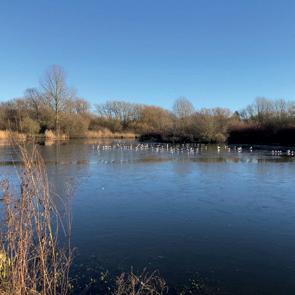

Since its launch in 2016, our Swindon Wellbeing Programme has provided support to adults experiencing mental health conditions, loneliness, and isolation. The programme includes weekly groups where participants engage in a wide range of activities across nature reserves and other local green spaces, as well as receiving one-to-one support from our staff.
Activities include nature walks (including wildlife identification, dissecting owl pellets, pond-dipping, and bird ringing), conservation tasks (like apple pruning and coppicing), traditional skills (such as whittling and working with clay), wild cooking and foraging, and self-care exercises like mindfulness and journaling. Seasonal celebrations and inclusive discussions, such as marking Ramadan, are also an important part of the programme.
As the programme developed the team recognised the need for
longer term support, and created follow-on groups for allotment and conservation work, which encourage regular interactions with nature but with greater independence for the participants. Demonstrating the power of social cohesion as a lasting legacy of this project, participants have also created a participantled Social Group, which sees peers continuing to support each other after the official programme has ended.
The benefits of the programme are clear to see, with remarkable improvements in participants’ well-being, self-esteem, and selfconfidence. In Year 4, 95.5% of participants improved or maintained their wellbeing scores, and 90% improved or maintained their selfesteem scores. Furthermore, a significant 95% maintained or improved their self-confidence scores. Participants’ connection to nature was also profoundly impacted,
with 80% increasing or maintaining their connection to nature..
Beyond the numbers, the personal impact is striking. Course attendees have shared some incredibly moving testimonials: “This has kept me alive; if I did not attend... I wouldn’t be here now.” Many describe feeling “calmer” and “more at ease” after joining the group, while the programme also serves as a crucial bridge to further engagement in the local community, with 72% of participants moving on to volunteering, employment, or education opportunities.
Our comprehensive efforts across Swindon, from hands-on conservation to improving personal well-being through nature, show the dedication and ongoing commitment of the Trust to creating a healthier, greener, and more connected community in our one of our main towns.
Beyond the bustling urban centre of Swindon lies a network of nature reserves managed by the Trust. Our spaces range from ancient, traditionally coppiced woodlands like Clouts Wood and Hagbourne Copse to vibrant wildflower carpets such as Morningside Meadows. While many of these sites offer an open invitation for a quiet walk, some of our most ecologically sensitive locations require a more protected approach. Swindon Lagoons is a remarkable story of nature’s recovery on a former industrial site, which is now home to a range of wetland wildlife. Due to its sensitivity and to protect the rich biodiversity within, this reserve is closed to the public but can be experienced through special guided tours and open days, offering a unique, curated glimpse into an incredible transformation.
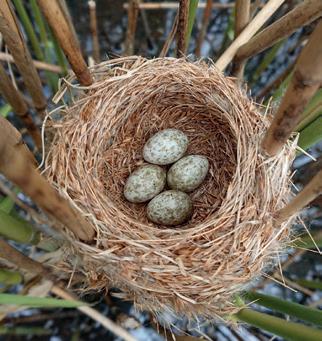
Happy 10th Anniversary to the Salisbury Wildlife Watch group! For over a decade, this incredible team of volunteers has been connecting children and their families with nature in their town, igniting a positive relationship with and a love for local wildlife and wild spaces.
At the heart of the group are its leaders, the two Penny’s and Sarah. Together, these three women have nurtured the group, always seeking out new and exciting ways to engage young people. They bring in experts to capture the imagination of young people and lead sessions on everything from mammal skeletons and moth trapping to the life of a shepherdess. From the wonder of holding elephant hawk moths to the thrill of pond dipping at Langford Lakes and bug hunting at Coombe Bissett, the activities are always hands-on and memorable.
What makes Salisbury Wildlife Watch special is its approach. Rather than sticking to one location, the group’s adventures take them all over Salisbury and its beautiful surroundings. Sessions are held everywhere from the River Bourne Community Centre to Sarah’s back garden—complete with donkeys and a stream! The children also enjoy exploring our nearby reserves like Coombe Bissett Down, Langford Lakes, and The Devenish.
Penny F, co-founder of the group, beautifully sums up the joy of volunteering in the Wildlife Watch role: “I love seeing the parents and children interacting, sharing the wonder of nature.” She also loves introducing families to their undiscovered local nature reserves, many of which parents don’t realise are open to visitors at any time of day, so are a perfect nature spot to enjoy after school.
For Penny, the journey began with a lifelong love of nature instilled by her father. “The Watch group offered me the opportunity to combine my two joys in one package,” she explains—her passion for the countryside and her experience working with children. She and Sarah initially thought they would be assisting an existing group, but they ended up establishing the Salisbury Wildlife Watch group themselves in April 2015.
Ten years on, the seeds they have planted have blossomed into a vibrant community where friendships grow alongside an appreciation of nature.
Want to learn more about becoming a Wildlife Watch volunteer? Contact wildlifewatch@wiltshirewildlife.org

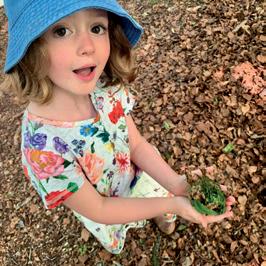

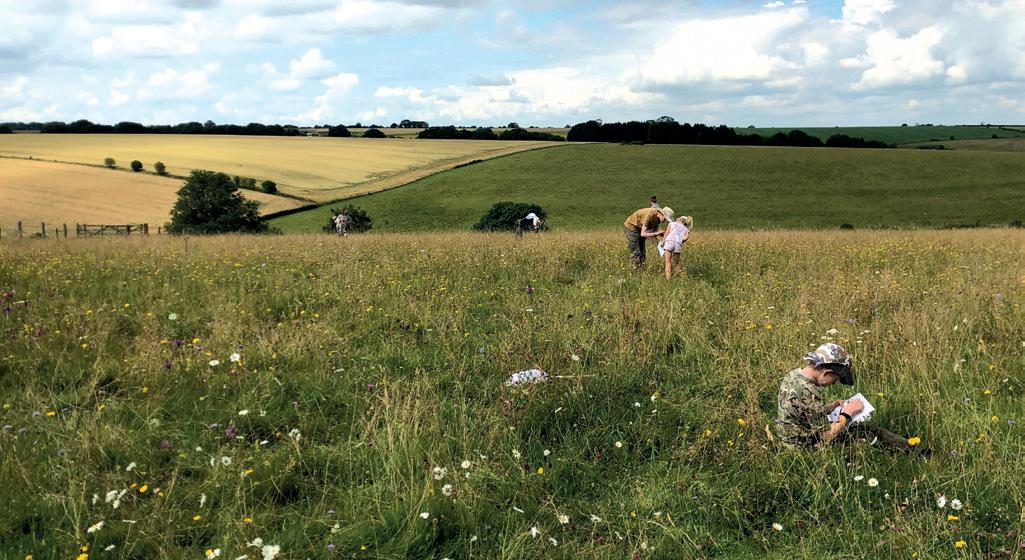


AUTUMN SPECIES APPEAL
Wandering through one of our nature reserve meadows in late spring or early summer, you might just spot a flash of orange and brown fluttering low through the grasses. That’s the marsh fritillary—one of the UK’s most beautiful and threatened butterflies. Once common across the UK and Europe, its numbers have plummeted over the last century, and we have been working hard to ensure they keep a stronghold in Wiltshire.
The marsh fritillary’s well-being is a sign of a healthy ecosystem. Its survival depends on healthy chalk and damp grasslands, especially those rich in its favourite foodplant, Devil’s-bit scabious. This plant, along with the patchwork of short and tussocky grasses the caterpillars need for shelter, forms the perfect butterfly habitat. So, when the marsh fritillary is flourishing, it’s a good indication that the surrounding environment is also thriving.
The good news? Wiltshire’s unique chalk landscapes and meadows are some of the best places in England for this butterfly. Aided by teams of volunteers plug planting Devil’sbit scabious and working in partnership with other landowners, we have been restoring
and protecting these habitats.
But this glorious butterfly still needs our help.
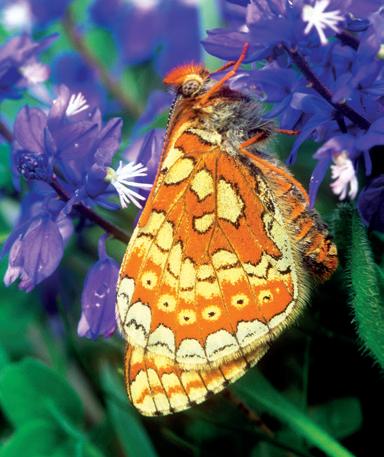
Marsh fritillary form “metapopulations”— networks of small colonies that depend on each other for long-term survival. If one colony disappears, another nearby can repopulate it. But this only works if there are enough well-connected, suitable sites across the landscape. Without careful management, even short-term declines could tip the balance.
That’s where you come in.
We’re launching a fundraising appeal to support vital habitat restoration, monitoring, and community engagement across Wiltshire. From surveying caterpillar webs in summer to planting Devil’s-bit scabious and expanding the network of butterfly-friendly corridors, your support will help give this stunning species a fighting chance. Donate today to ensure it continues to grace our meadows for generations to come
Did you know?
Female marsh fritillaries lay eggs in a cluster on the underside of a leaf. Clusters can contain over 300 eggs.

The seasons of autumn and winter are sometimes perceived as a time for harvesting and hibernation. Both offer an often-overlooked opportunity to connect with nature. Far from being dreary seasons, the reduced daylight hours can invite us to appreciate the subtle shifts in light, the crisp air, and the new found quiet stillness of the landscape.
Here at the Trust, we make the most of every season, and winter is no exception; from tree planting to cutting back vegetation, our team and our volunteers are outside and many extoll the virtues of it. So, pull on your warmest layers, grab your camera or simply open your senses, and discover opportunities for connecting with nature this autumn and winter.
Winter often evokes a sense of stillness and contemplation. The quietness, with fewer people and less wildlife activity, creates a profound sense of peace. The cooler temperatures can also be invigorating, sharpening your senses. The lack of dense foliage in deciduous woodlands allows more light to penetrate, even on shorter days, illuminating the forest floor.
Autumn and winter offer an ideal setting for forest bathing, or ShinrinYoku – the practice of immersing yourself in the atmosphere of the forest. It’s not about hiking or exercise, but about slowing down, opening your senses, and connecting with nature in a mindful

way. Instead of marching through the woods, pause, notice the scent of damp earth and decaying leaves and the sound of rustling branches. Observe the intricate patterns of bark, the delicate structure of a fallen leaf, or the subtle variations in light.
Choose a comfortable spot to sit quietly for a while and simply be present, observing what unfolds around you. Inhale the fresh, crisp air. Feel the difference in temperature as you breathe deeply into your diaphragm. The beauty of forest bathing is its simplicity. There’s no right or wrong way to do it; just allow yourself to be enveloped by the woodland.

Wiltshire’s landscapes offer a wealth of opportunities to make the most of these seasons. Explore our beautiful reserves and discover the quiet wonders that this often-underestimated time of year holds.
All of our reserves offer unique beauty, but here are some top spots:
Langford Lakes (near Salisbury):
The open water and reedbeds offer fantastic opportunities for capturing reflections and birdlife against the winter light.
Winter light is a dream. The sun hangs lower in the sky, casting long, soft shadows and bathing the landscape in a warm, golden glow. This is particularly true during the golden hour – the period shortly after sunrise and just before sunset – which stretches longer in winter. It provides the perfect opportunity to either simply enjoy the spectacular scenery or capture special moments through photography or videography.
Frost-covered branches sparkling in the low sun or ethereal mist rising from a valley transform even the most familiar landscapes into incredible scenes. With fewer leaves on the trees, the intricate patterns of branches, the texture of bark, and the delicate structures of seedheads become more prominent. And the low winter sun is perfect for creating dramatic silhouettes.
Clattinger Farm, part of Lower Moor Farm (near Malmesbury): The ancient meadows, even in winter, possess a unique character, with frost-kissed grasses and skeletal seedheads.
Landford Bog (near Shaftesbury): This incredibly rare bog is a carpet of feathery moss with expanses of purple hues through heather and purple moor-grass.
To plan your trip to a reserve go to our website at wiltshirewildlife.org/visit

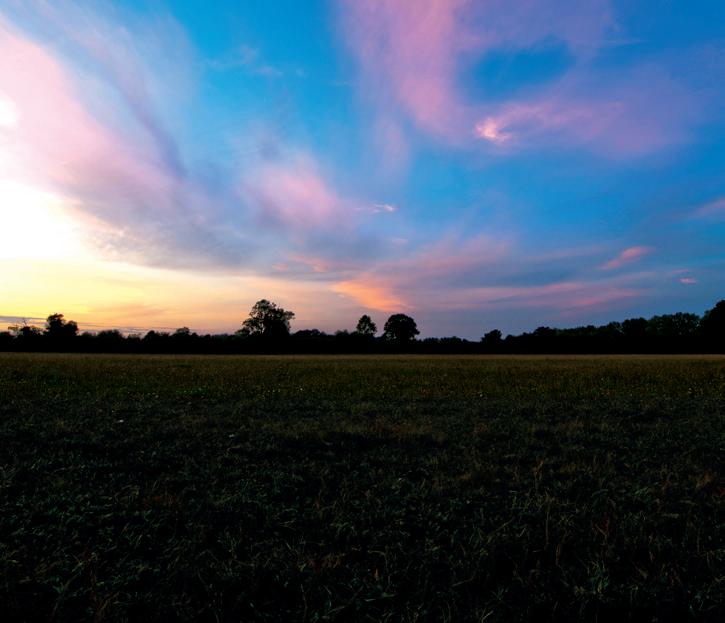
2025 has been a year of engagement as we’ve seen hundreds of people from across the county join us at our events including Country Comes to Town and our Bioblitz at Langford Lakes. Connecting people with nature is a key part of our strategy, and these events are just one of the ways we do that...
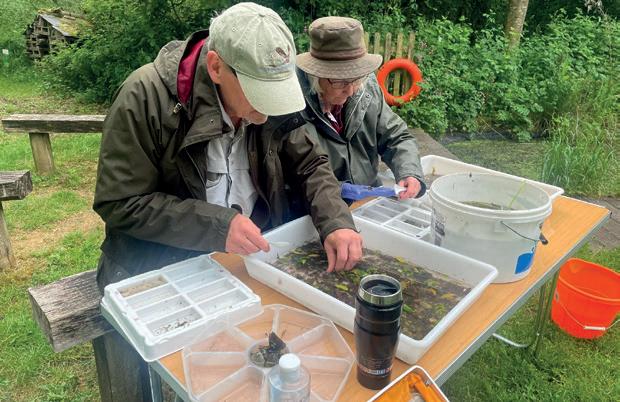

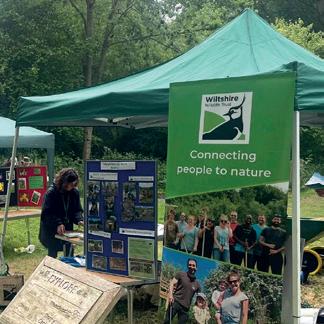

This June, we held our first Bioblitz at Langford Lakes. A Bioblitz is a weekend of wildlife recording, taking the opportunity to work with partners to get a snapshot of the reserve’s ecology.
While recorders set out across the site, we set up a public engagement area alongside our wonderful partners, including Wiltshire Mammal Group and Wiltshire Ornithological Society, to showcase the findings and engage with the visitors. It was a fantastic opportunity both for us to showcase our reserve and engage
families in hands-on activities, and for our partners to give our visitors some brilliant practical ways to take action for wildlife.
Owl pellet dissection helped us survey the small mammals which have been found at the reserve, whilst insects and fish found in the River Wylye were recorded, including some forms of larvae which had not been seen in this location before. Small brown trout were also found, and families given the opportunity to get a close-up look. Our moth trap set overnight collected a number of
species that proved to be the stars of the show, with the black poplar moth a particular highlight.
Not only did the recording help our Reserves Team with their management of the site, this event was also an amazing opportunity to connect young people and visitors with wildlife in a new way. Many had come along just for a walk around the reserve but left with a new understanding of nature and an interest in learning more.
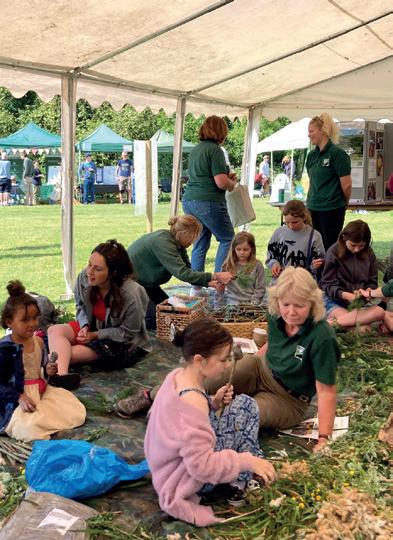

Country Comes to Town started in 2012 as part of the Trust’s 50th Anniversary celebrations. Traditionally held in Devizes as the hometown of our headquarters, more recently it has been roving, changing location each year and helping our community feel more connected to our work. Previous editions have been held in Salisbury, Swindon and Trowbridge, with the aim of reaching more communities across the county. We know that for many people, travelling to nature reserves isn’t always possible, but coming to their local park is a great way to learn more about nature and the Trust, all whilst having a fun day out!
From educational and craft activities to plant sales, our infamous smoothie bike to pond dipping, the event is thoughtfully designed to appeal to a wide range of people. This year, we made Monkton Park in Chippenham our home for the day; it was a joy to engage with over 1,500 members of the public for a brilliant
day connecting people with nature. Our Education area, always popular, was full of children making boggits (clay heads!), pinecone sheep and stick wands – getting creative with nature in a new and accessible way that they could take and recreate at home. Through our monthly Wildlife Watch groups in nine locations across the county, and our work with hundreds of pupils through our school’s programme, we hope that events such as this form foundations which can be built upon to encourage a life-long love of nature. Not leaving the adults out, our Wellbeing Team were making flower crowns and sharing the work of their programmes designed to improve mental health and wellbeing through nature.
In our Information area, the Conservation and Land Management Team put the spotlight on our local reserve in Chippenham, Vincient’s Wood, and the huge transformation the habitat has experienced as a

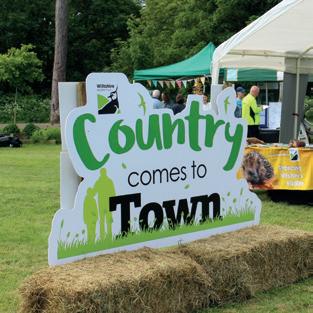
result of Ash Die Back. Our Water Team drew crowds with their huge tank of water full of wildlife from the local river, where visitors could explore and learn to identify different species.
We know that nature’s recovery will only be possible through collaboration and partnerships, so were delighted to be joined by 12 partner organisations including Chippenham Youth Council, Zero Chippenham, and Wiltshire Ornithological Society.
This event is not only special because we get to meet so many new people who are curious about our work, but also as we get to catch up with many of our members, donors, supporters and volunteers. We cherish every opportunity to connect with individuals and communities that are helping us achieve our goal of 1 in 4 people taking action for nature.
Keep an eye out throughout the year for an event near you: wiltshirewildlife.org/events
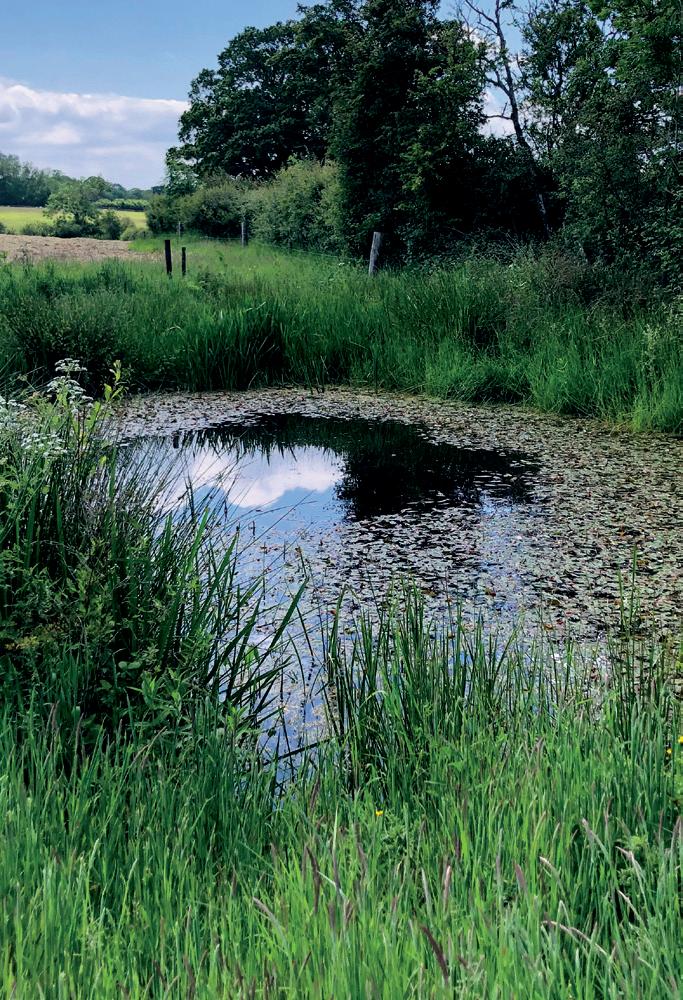

Ghosts live here. Wiltshire’s landscape is rife with them; sitting in depressions, hiding in grasses, concealed in arable fields. They suggest themselves when it rains, becoming bogged in standing water. To find them you need to walk the land, search out watery places. Or you talk to older people, those with memories stretching long back into the last century; if you can find the right people they’ll know where the ghosts are.

Another way is to explore old maps, the faded, hand-drawn hard drives of the past. Maps from the 1800s are best, earlier if you can find them. A good place to start is ‘Know Your Place.’ This online tool overlays modern maps with historic charts, georeferencing past landscapes with contemporary conditions. That is where
ghosts can be found: on old maps where the blue of a pond stands out, you can lay modern maps over to see if they remain or if they have been etched away over time.
Once discovered, they can be revived, but you must visit first. Abstract ghosts are mysteries, their stories need to be told. To understand them you need to know how the hollow stretches, where water sits, what ghosted them in the first place. Ghost ponds of villages, watering holes of farms, dew ponds; we must begin to map them once more.
Then, with care they can be brought back to life. Seed-banked mud waiting to be waterlogged, pools dug back into the ground. Then they thrive. Hundred-year-old seeds germinate in resurrected wetlands; invertebrates find them; amphibians hunt them out; birds spot them from above. Ghost ponds are the Tetris of ecology; you just need to work out how the pieces fit.
Becky Gee, part of the Trust’s Water Team working on the creation and revival of these important habitats says, “When you go out and find a wet area it could be a ghost pond. Ideally you would restore the original shape, but the space isn’t always there.” That’s because time has shifted the landscape, leaving square pegs for round holes.
It takes effort, but when you get it right it the ecological rewards abound. Diggers search the land for dark sediments, discovering the ghost pond’s extent. Once the size, shape and depth are established, the final step is to excavate – breathing life into the old ghost.
It’s astonishing to witness hollows reinvigorate with water and life. Whole ecosystems are recreated in pond mosaics, a meta-ecology of life and energy. The humming of dragonflies and birds; flowers, reeds and rushes creating vertical structure; the world of diving beetles, amphibians and backswimmers below the surface; newts and other creatures evolved to cross the boundary between water and land.
Reviving these ghosts, reinvigorating landscapes with water is the dream of nature lovers. Mosaics of life dotting farmed landscapes, wildlife co-existing with the needs of people. Adding colour, adding wonder. Ghosts no more, these small oases become buzzing natural riches watering our countryside once again. All they need is a catalyst.
Donate today to our Nature’s Recovery Appeal to enable us to keep conserving vital habitats across Wiltshire: wiltshirewildlife.org/appeals
Sharing a meal over the campfire is an important part of our Wellbeing programmes, and the team have a stash of campfire recipes that are easy to reproduce at home, all written to promote health while contributing to a sustainable future for wildlife. As the days get shorter and the cold creeps in, our quick bean and pepper chilli is guaranteed to warm both body and soul!
Recipe by Immie Jackson
• 1½ tbsp vegetable oil
• 1 onion, sliced
• 2 peppers, sliced
• 2 garlic cloves, crushed
• 1 tbsp ground cumin
• 1 tbsp ground coriander
• 1 fresh chilli finely chopped OR ½ -1 tsp chilli powder
• 2 tsp smoked paprika
• 400g can chopped tomatoes
• 400g can mixed beans, drained
• 400g can black beans, drained
To serve (optional)
• Rice or baked potato
• Fresh coriander

Instructions:
Heat the oil in a saucepan and fry the onion and peppers over medium heat for 10 minutes, until the onion is golden brown.
Add the garlic, chilli, and spices, and fry for 1 minute. Pour in the tomatoes, both cans of beans & 50ml water. Stir everything together. Simmer, stirring regularly, for 15-20 minutes until it thickens.
“Our quick bean and pepper chilli is guaranteed to warm both body and soul!”
Meanwhile, cook rice according to the package instructions, or cook your baked potato while leaving the chilli to simmer on a low heat.
Serve the chilli with a sprinkle chopped coriander on top.
Here are a list of important events not to be missed up until the Spring
Wednesday 8 October 2025
10am - 3pm
Autumn Botanical Painting at Langford Lakes
Join Sally Pond and learn how to create beautiful botanical paintings right at the heart of nature at our Langford Lakes reserve.
Booking essential. Price £50 per person (includes light lunch)
Saturdays 18 October, 29 November 2025
9:30am – 12pm
St Giles Living Churchyard
Learn how to manage churchyards for wildlife and participate in hands-on activities.
Free no need to book.
Wednesday 29th OctoberLangford Lakes and Biss Wood; Thursday 30th October 2025Lower Moor Farm
10am -12pm
Family Fun Event
Join our Youth and Education Team on our reserves for nature-based family fun activities in half term.
Booking essential. Adults: free, Children: £5 per child – under 2s are free
Sunday 30 November 2025 10am - 1pm
Swindon Wildlife Group: Cotswolds Water Park Birdwatch
A chance to see the newly arrived wintering wildfowl in the Cotswold Lakes.
Booking essential. Adults: £5 Children: Free
Wednesday 10 December 2025 10am - 3pm Winter Botanical Painting Workshop
Led by Sally Pond, these workshops concentrate on developing observation, drawing and painting skills using seasonal subjects at Langford Lakes.
Booking essential. Price £50 per person (includes light lunch)
Sunday 18 January 2026 10am - 1pm
Swindon Wildlife Group: A Bird Walk Around Coate Water
Our traditional winter birding walk around Coate Water at a time when wildfowl are at their most numerous and attractive.
Booking essential. Adults: £5 Children: Free
Saturday 14 February 2026 10am – 1pm
Swindon Wildlife Group: Canal Walk from Morningside Farm
A walk along the disused canal at Morningside Farm – a selection of water birds and others should be seen.
Booking essential. Adults: £5 Children: Free
Wednesday 18 February 2026Lower Moor Farm
Thursday 19 February 2026Langford Lakes and Biss Wood 10am -12pm Family Event: Winter Forest School
Join one of our Forest School leaders to enjoy a Winter session that embraces the season and your imagination.
Booking essential. Adults: free, Children: £5 per child – under 2s are free
Saturday 14 March 2026
8:30am – 11:30am
Swindon Wildlife Group: Bird Ringing at The Firs
Simon Tucker and team demonstrate the art of bird ringing; an opportunity to see a good variety of birds close up.
Booking essential. Adults: £5 Children: Free

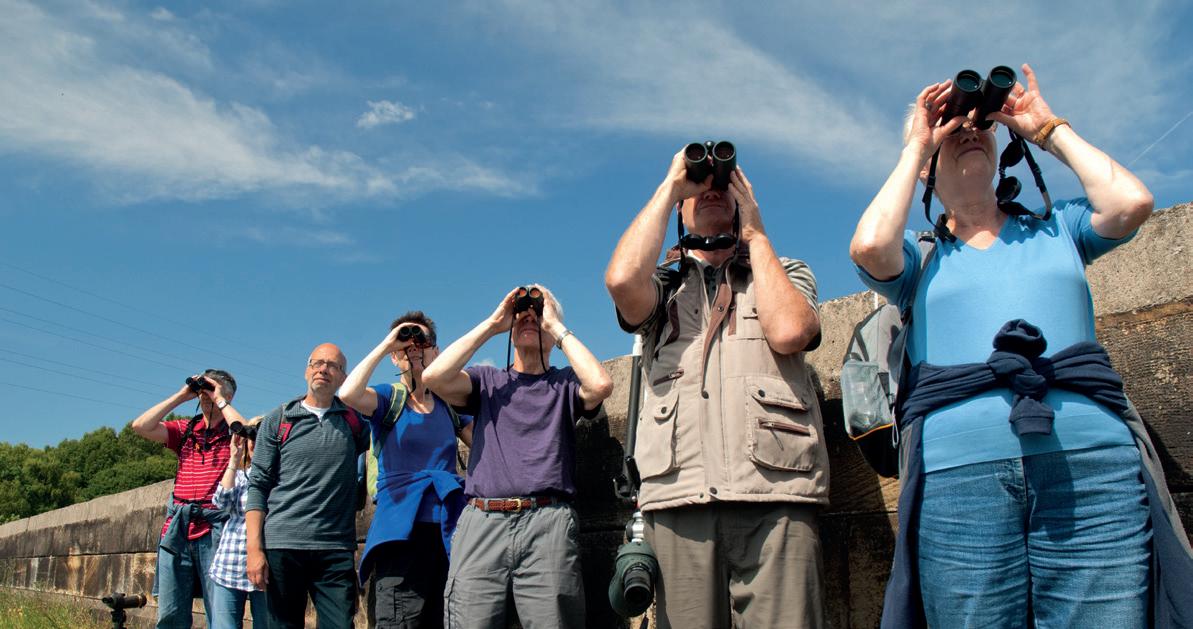

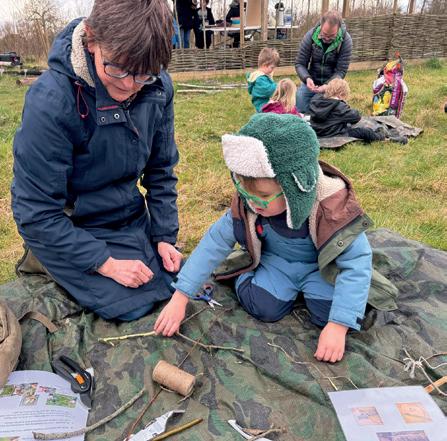

Wildlife Watch Groups are a fantastic way for primary-aged children and their families to connect with nature and with nine groups located throughout Wiltshire, there’s sure to be one near you.
Our groups meet monthly at these locations:
First Weekend of the Month
• Every First Saturday: Lower Moor Farm
• Every First Sunday: Trowbridge
Second Weekend of the Month
• Every Second Saturday: Pewsey
• Every Second Saturday: Salisbury
Third Weekend of the Month
• Every Third Saturday: Green Lane Wood, Trowbridge
• Every Third Saturday: Swindon
• Every Third Sunday: Chippenham (Early Earth Protectors)
Fourth Weekend of the Month
• Every Fourth Sunday: Langford Lakes
Calne: The River Warriors group vary their sessions throughout the month; keep an eye on their Facebook page for information: facebook.com/ riverwarriorscalne
We are hoping to open more groups so do check our website for further information: wiltshirewildlife.org/ watch

By becoming a Corporate Member with Wiltshire Wildlife Trust, you are actively contributing to conservation and connecting people with nature across Wiltshire and Swindon, demonstrating your commitment to nature’s recovery. You will also boost your visibility across the county, create connections with your local community and enhance employee wellbeing.
Get in touch with the team about becoming a Corporate Member today; email fundraising@wiltshirewildlife.org or visit wiltshirewildlife.org/corporate-membership
Thank you to all our Corporate Members who are helping us create a sustainable future for wildlife and people.
Gold:
Silver: Knorr Bremse
Platinum Motor Group
Quick Move Now

Bronze: Batt Broadbent Center Parcs
Challenge Sustainability
Content Coms
Ecolibrium
Holiday Cottages
Wessex Water Wilton House
Small Business: 1st Aid 4 Fencing Clegg Associates Ltd
Energy Saving Experts
JMH Farming & Renewables
Liddington Mortgages Xtreme Mowing
Spending time outdoors improves physical and mental health and wellbeing. Our Wild Work Days are a brilliant opportunity for you and your team to get outside and feel these benefits.
Roll up your sleeves and get stuck into a range of physical conservation activities on one of our reserves while connecting with your team-mates in a friendly, relaxed environment.
We can tailor the day to suit the needs of your team.
Visit wiltshirewildlife.org/wild-work-days or email fundraising@wiltshirewildlife.org to find out more.

